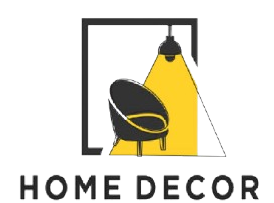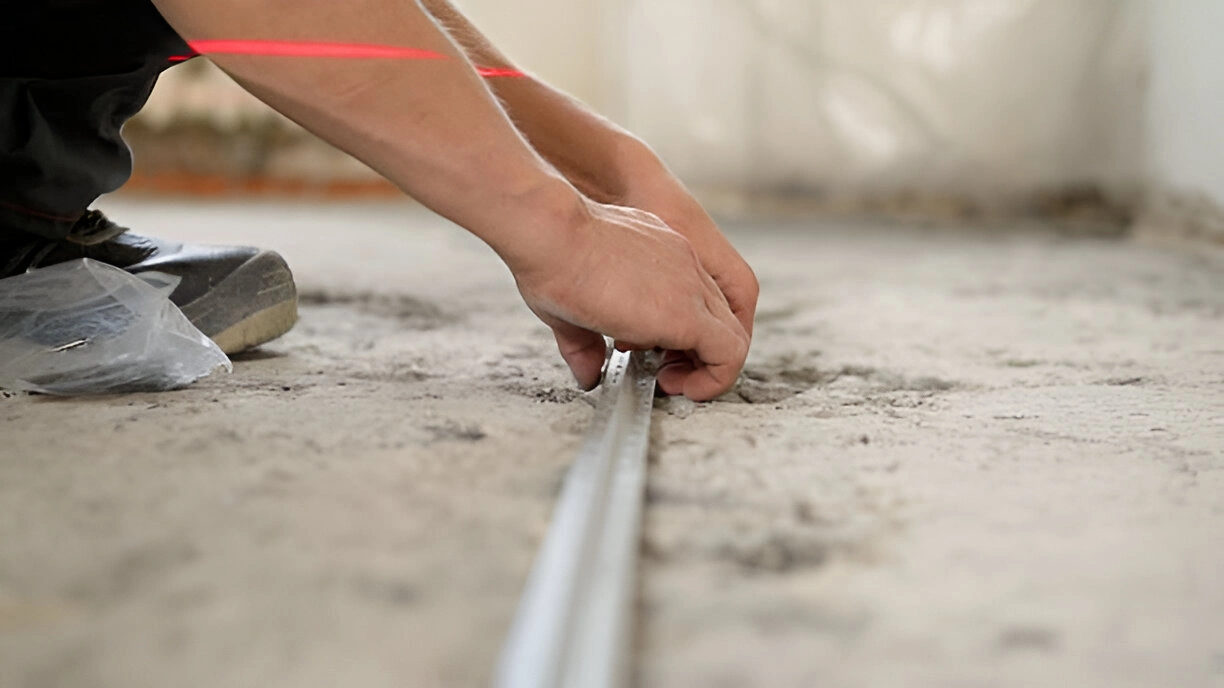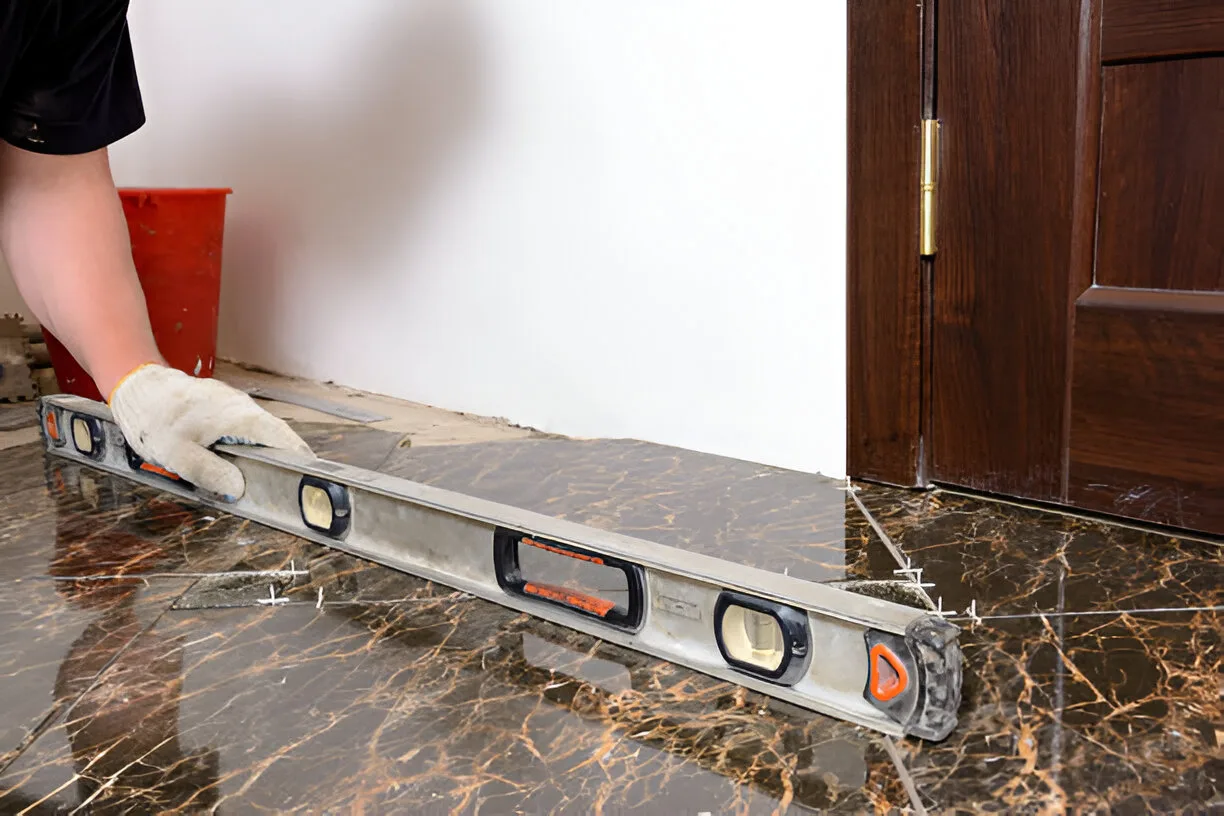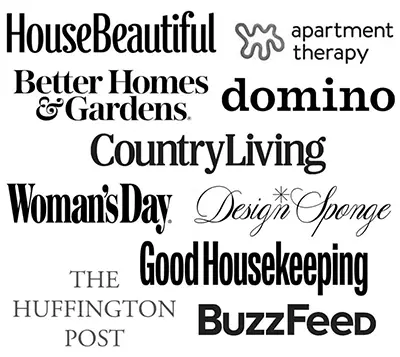You’ve finally decided to upgrade your floors. You’ve spent hours poring over samples of luxurious vinyl plank (LVP), elegant hardwood, or cozy carpet. You’ve found the perfect one, only to have your dreams slightly dashed when your contractor—or your own two feet- discover a problem. The floor isn’t level. That gentle slope into the living room or the slight bounce near the kitchen isn’t just a quirk; it’s a deal-breaker for new flooring.
Here at BehindDecor, we believe that knowledge is power, especially when it involves the structural bones of your home. The thought of “floor leveling cost” can be intimidating, shrouded in mystery, and the fear of a five-figure invoice. But fear not! We’re pulling back the curtain to give you a comprehensive, no-nonsense breakdown of what it really costs to level a floor in the USA.
Grab a cup of coffee, and let’s demystify this together. We’ll walk through the why, the how, and most importantly, the how much.
Why Can’t I Just Ignore a Sloping Floor?
Think of your new flooring like a meticulously crafted suit or a gorgeous dress. If you try to put it on over a bulky, lumpy sweater, it’s not going to look right. An uneven subfloor is like that lumpy sweater. Installing over it can lead to a host of nightmares:
- Premature Wear and Tear: Locking mechanisms on LVP and laminate can crack or separate. Hardwood boards can squeak, cup, or warp.
- Visible Imperfections: Every dip and hump will telegraph through your new floor, ruining the smooth, flawless finish you paid for.
- Safety Hazards: Significant slopes or soft spots can be a tripping hazard.
- Underlying Issues: Sometimes, a sloping floor is a symptom of a larger problem, like settling foundations or compromised joists. Addressing the leveling often means addressing the root cause.
Fixing the floor before you install is not an optional upsell; it’s a critical step to protect your investment.
Breaking Down the Floor Leveling Cost: Methods & Price Tags
There is no one-size-fits-all price for leveling a floor. The final floor leveling cost is a recipe with several ingredients: the method, the square footage, the severity of the problem, and your location. Let’s dive into the two most common solutions.
The Surface Solution: Self-Leveling Compound (Underlayment)
This is the go-to fix for most interior rooms with concrete subfloors or minor deviations in wooden subfloors. Self-leveling compound (SLC) is a miraculous, cement-based slurry that you pour out. It seeks its own level, flowing into low spots and creating a perfectly flat, smooth surface.
Ideal for: Concrete slabs, basements, minor dips and valleys (typically up to 1.5 inches), preparing for rigid flooring like LVP, tile, or hardwood.
What Impacts the Cost of Self-Leveling Compound?
- Square Footage: This is the biggest driver. Contractors often price by the square foot.
- Thickness Required: This is the critical factor. SLC isn’t cheap, and the price skyrockets if you need to pour it thick. A feather-edge skim coat is far less expensive than building up a several-inch slope.
- Prep Work: The existing floor must be meticulously cleaned, primed, and sometimes sanded. This labor is factored in.
- Labor vs. DIY: This is a professional-grade job for most. It sets fast, and mixing errors can be costly.
Self-Leveling Compound Cost Breakdown
- Material Cost: The compound itself runs $25 to $45 per 50-pound bag. Coverage varies wildly based on thickness. A single bag might cover 50 sq ft at a 1/8-inch depth or only 12 sq ft at a 1/2-inch depth.
- Professional Installation Cost: The total installed floor leveling cost for SLC typically falls between $3 $8 per square foot.
- For a 400 sq ft room, you’re looking at a total project cost of $1,200 to $3,200.
The “Oh My!” Scenario: If your floor is out of level by more than 1.5 inches, the cost can jump to $8 to $16+ per square foot due to the immense volume of material required. At this point, it’s worth investigating if there’s a structural problem underneath.
The Structural Solution: Mudjacking & Piering (For Concrete Slabs)
Is your garage floor sinking? Your patio tilting? Is your basement floor looking more like a skateboard ramp? This is a job for concrete slab lifting.
Ideal for: Sunken concrete slabs—sidewalks, driveways, patios, and basement floors.
Method 1: Mudjacking (Slab Jacking)
A mixture of sand, cement, and water (the “mud”) is pumped under pressure through small holes drilled in the concrete. This lifts the slab back to its original position.
- Mudjacking Cost: Generally $3 to $6 per square foot.
Method 2: Polyurethane Foam Jacking
A newer method where high-density polyurethane foam is injected. It expands rapidly, lifting the slab. It’s lighter, less invasive, and cures faster than mud, but comes at a premium.
- Foam Jacking Cost: Ranges from $5 to $25 per square foot, depending on the complexity and accessibility.
The Framing Solution: Sistering Joists & Subfloor Work
If the unevenness in your wooden subfloor is caused by sagging, damaged, or undersized floor joists, no amount of SLC will provide a permanent fix. This requires a carpenter or structural engineer to address the framing itself.
Ideal for: Older homes with significant bounce, sagging areas that feel soft, or obvious joist damage.
The Cost: This is the most variable and typically most expensive option, as it’s highly customized. It involves adding new joists alongside old ones (“sistering”) to add strength and straighten the frame. Costs are usually calculated as a project fee rather than by square foot. Small repairs might be a few thousand dollars, while whole-house leveling could soar into the $10,000-$20,000+ range.
The National Average: A Quick Snapshot
While your exact quote will be unique, it helps to see the big picture. Here’s a consolidated view of average floor leveling cost:
| Method | Average Cost per Sq. Ft. | Typical 400 Sq. Ft. Room Cost | Best For |
| Self-Leveling Compound | $3 – $8 | $1,200 – $3,200 | Interior rooms, minor-moderate unevenness |
| Mudjacking | $3 – $6 | $1,200 – $2,400 | Sunken exterior concrete slabs |
| Polyurethane Foam | $5 – $25 | $2,000 – $10,000 | Sunken slabs where minimal disruption is key |
| Subfloor Preparation | $1.50 – $4.50* | $600 – $1,800 | Minor patching & leveling for new flooring |
| Structural Joist Repair | Varies (Project-Based) | $2,000 – $10,000+ | Significant sagging, bounce, or structural issues |
Location Note: These are national averages. Labor and material costs in high-cost-of-living states like California, New York, or Massachusetts will be on the higher end. Costs in the Midwest and South may be more moderate.
Real-Life “Floor Leveling Cost” Scenarios from Around the US
To make this truly relatable, let’s tell a little.
- The Phoenix DIYer: Sarah in Arizona has a 200 sq ft sunroom with a concrete slab that has a few minor dips. She’s handy and decides to tackle the SLC herself. Her cost: $200-$400 for materials (primer, compound, tools) and a weekend of sweat equity.
- The Atlanta Renovator: Mike and Maria in Georgia are updating their entire 1,000 sq ft basement to create a playroom. The concrete floor has noticeable sloping toward a drain. They hire a professional to pour self-leveling concrete. With moderate thickness required, their floor leveling cost comes in around $4,500.
- The Chicago Story: An older home in Illinois has a noticeable sag in the center of the living room. The contractor investigates and finds several compromised joists that need sistering. This structural repair, combined with subfloor leveling, costs $7,500.
- The Florida Fix: David in Tampa notices his driveway slab has sunk 2 inches, creating a tripping hazard and pooling water. He opts for polyurethane foam jacking for its longevity and fast cure time. For 300 sq ft, he pays $4,500.
Getting an Accurate Quote: What to Ask Your Contractor
Walking into this process informed will save you money and stress. When getting quotes, ask these questions:
- What is the root cause of the unevenness? (Settling, joist issues, etc.)
- What leveling method do you recommend and why?
- Is the quote a fixed price or an estimate? (Beware of estimates that can balloon).
- What does the prep work include? (Cleaning, priming, sealing cracks).
- Are there any potential additional costs? (e.g., moving appliances, trim work).
- How long will the project take, and what is the curing time before new flooring can be installed?
- Can you provide references or examples of past similar work?
Pro Tip from BehindDecor: Always get at least three detailed, written quotes from licensed and insured contractors. The cheapest option is not always the best when it comes to the foundation of your home.
Frequently Asked Questions (FAQs)
What is the average cost to level a floor?
For self-leveling compound, expect $3-$8 per sq ft. Structural repairs or mudjacking vary from $3-$25+ per sq ft based on method and severity.
Can I level my floor myself?
For small, minor patches, maybe. For large pours, we strongly recommend a pro. Improper mixing leads to costly errors and redos.
Will floor leveling fix my foundation problems?
No. Leveling creates a flat surface on top. It does not address the underlying structural cause of the sinking or settling.
Is bottom leveling covered by homeowners' insurance?
Typical, no. Insurance covers sudden, accidental damage( like a storm), not long-term settling, wear and tear, or conservation issues.
How long does it take for the tone- democrat to dry?
It sets snappily( hours) but generally requires 24- 72 hours to completely cure before new flooring can be installed on top.
Conclusion: An Investment in Your Home’s Future
Understanding the bottom-leveling cost is the first step in transubstantiating a worrisome problem into a manageable design. While the figures can feel significant, view this expenditure not as a loss, but as a critical investment. It protects the important larger investment you’re making in your new flooring and, more importantly, ensures the long-term health, safety, and value of your home.
A position bottom is the silent, unnoticeable idol of a beautiful room. You might not notice it when it’s done right, but you’d surely notice if it were done awry, or not done at all.
Then at BehindDecor, we’re each about helping you make a home that’s not just beautiful on the face, but solid and sound from the ground up. Don’t let a little pitch ail your dreams; attack it head-on with the right knowledge and the right platoon.




